It is challenging to create a stunning aquarium by adding only some fish to the tank. You will have to place some additional elements for the substrate, such as aquatic plants, shells, or rocks. There is a problem with aquatic plants, though. Many of them require a good amount of light to grow. You can achieve it by setting up an extensive lighting system with LED lights and whatnot, but it is an expensive affair. You cannot wholly rely on sunlight, either. However, low-light aquarium plants seem to solve these problems effectively.
As their name suggests, these plants can survive even under a minimal amount of light. You do not have to buy a fully-fledged lighting system to keep them growing. From the affordability point of view, low-light aquarium plants are a significant step indeed. The best part? You have an impressive variety of options in the category so that you can choose a low-light aquarium plant that suits your landscaping ideas. For instance, even if you are looking for something cheerfully bright or so bleak, you will have a few options.
Below, we have listed some of the best low-light aquarium plants you can get today. We have chosen them based on their quality, visual appeal, and ability to survive in low-light conditions. We hope this helps you make an informed decision regarding aquarium landscaping.
Contents
#1 Anubias Barteri

If you want a bright addition to your planted aquarium, you should consider getting Anubias barteri. As you can see from the images, it would look stunning regardless of the aquascaping plan you have. Despite how bright the plant appears in a fish tank, it can live under low lighting and adjust to changes in temperature. However, because it is a root-feeding low-light aquarium plant, you should arrange a suitable base where Anubias Barteri can grow its root system. If you take care of this aspect, maintaining Anubias Barteri is an undemanding task. You also have the choice between fully merged and partially merged designs. In either case, the plant would easily handle low and medium-lighting environments. Its bright green leaves make it a good foreground plant in an aquascape, but it’s also a good midground or background plant. Furthermore, it makes a great sleeping spot for fish like betta!
#2 Java Fern
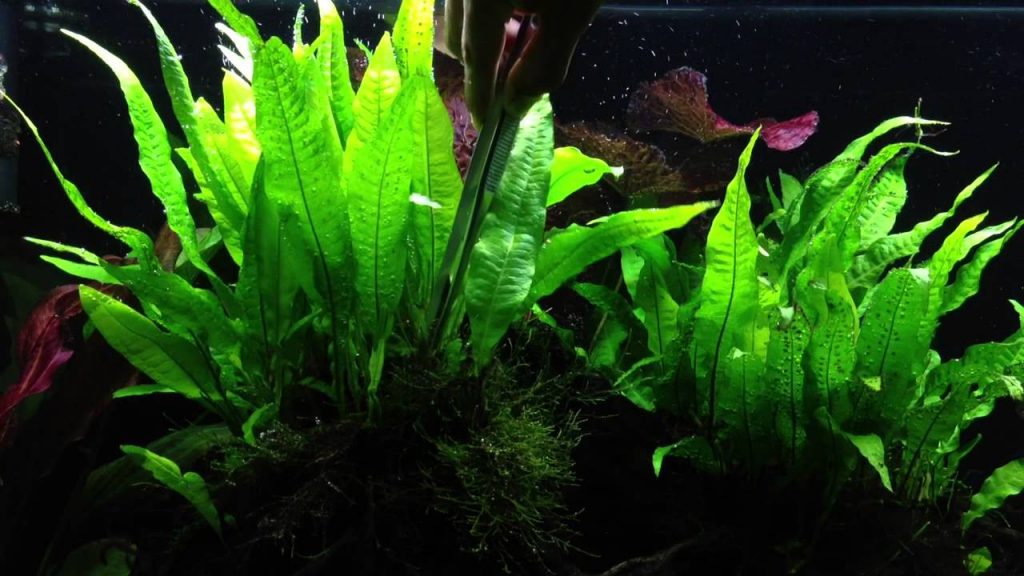
Microsorum pteropus, better known as Java fern, is another plant species that will flourish in a low-light tank. This plant shares a few similarities with the first one as well. First of all, you do not have to think about extensive maintenance. Second, it is pretty flexible to changes in the temperature. Finally, you can set up this plant with various landscaping ideas. It grips the substrate or driftwood of your planted tank via a set of rhizomes, but there still has to be a way for root expansion. It is worth noting that the Java fern would display some black or brown-colored spores when reaching maturity. The problem? It is also sensitive to changes in water conditions. It means you might have to be a stickler about changing the water frequently. Furthermore, it can survive high light conditions as well as little light, but its color and the way it grows will differ depending on the light level.
#3 Crypts
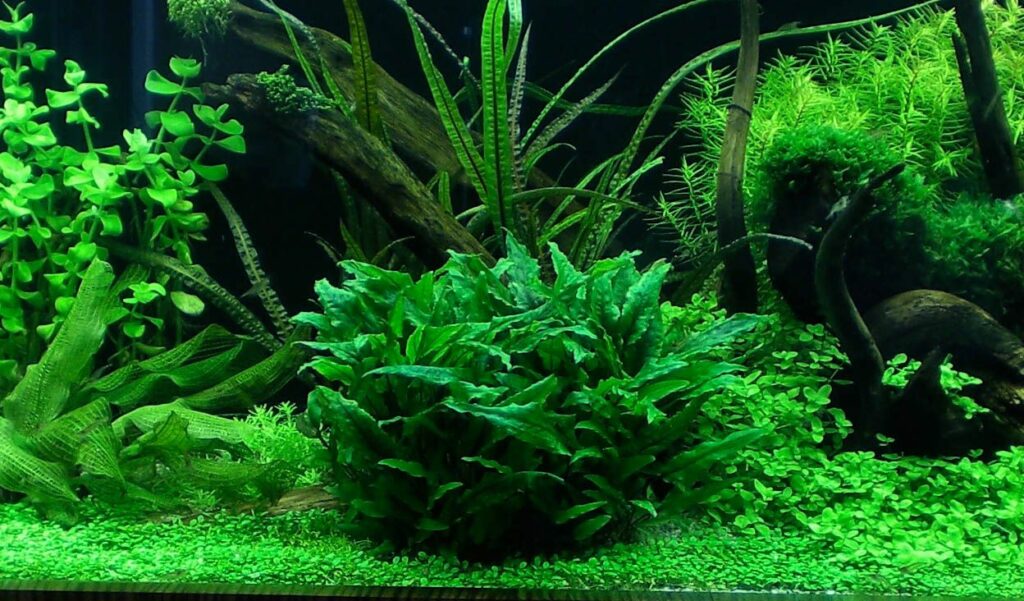
Crypts are a group of aquatic plants you can choose to place inside your aquarium. Because of their green color and mesmerizing designs, they make an excellent choice for setting up the bottom of the aquarium. The space created by the crypts will also be great for fish which will use the spots for hiding and rest. At the same time, crypts like Cryptocoryne wendtii or spiralis do not pose the problem of overgrowth or overpopulation. Even if the crypts plant reaches maturity, the size would not be more than 6 inches. Therefore, you would find it easy to manage how these elements look and work underwater. Last but not least, you can find a massive variety of crypts in the market, and they come in colors like brown, green, red, and even pink.
#4 Water Wisteria
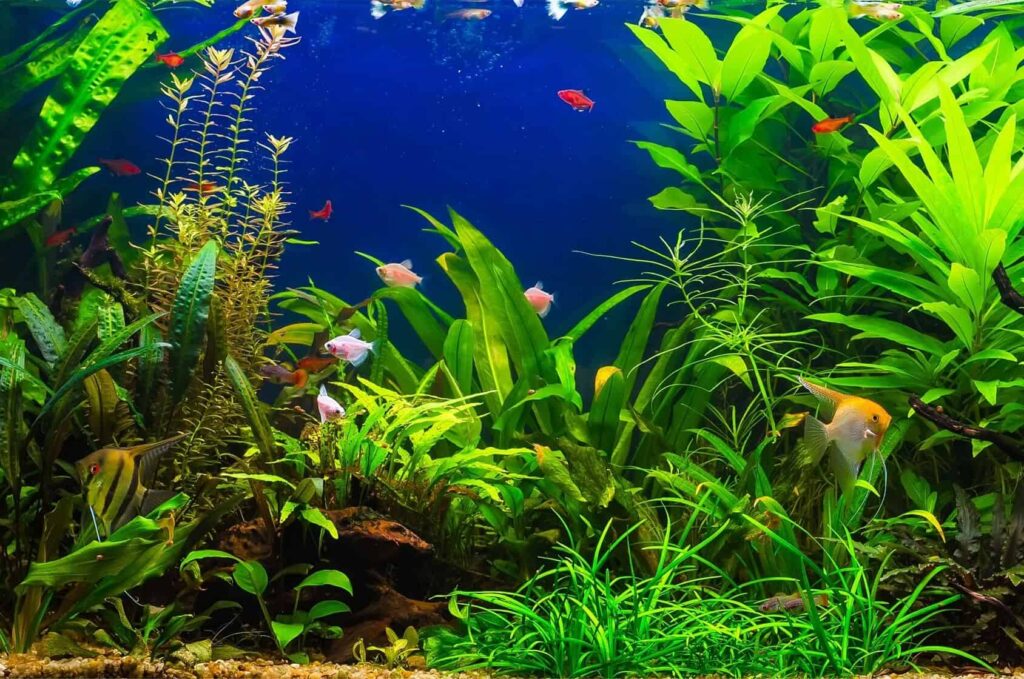
There are times when you need a low-light aquarium plant that does not take up much surface area, but it does not mean you can go for something subpar-looking, either. You can consider what the Water wisteria plant has to offer in those instances. While it is true that Water wisteria is not the most popular choice for aquarists, you can tame the plant for your aquarium landscaping needs. Unlike some of the other plants we have listed, Water wisteria can perform differently according to the light it is exposed to. For instance, if you expose the plant to bright light, you can control the growth better. However, if you place the plant under low light, it will grow independently. Either way, Water wisteria, a.k.a. Hygrophila difformis can be a great addition to your aquarium space on any day.
#5 Dwarf Rotala
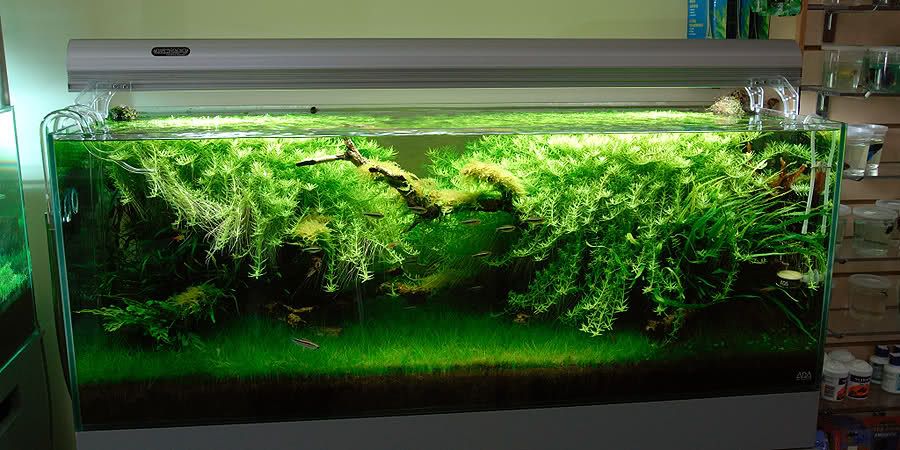
We have included the products mentioned above because there is an unchanged demand for bright, green, and vivid plants that live underwater with minimal light. However, people are also looking for low-light plants that will add some fancy colors to the aquarium. Dwarf Rotala, whose scientific name is Rotala rotundifolia, offers exactly that. This plant is very compact and does not consume much space from the aquarium system. The red-colored leaves and the orange-colored outlook will make your fish tank a platform for the mix of colors. Even though the plant can survive with low to minimal light, setting up a lighting system will help you ensure versatile colors.
#6 Dwarf Sagittaria
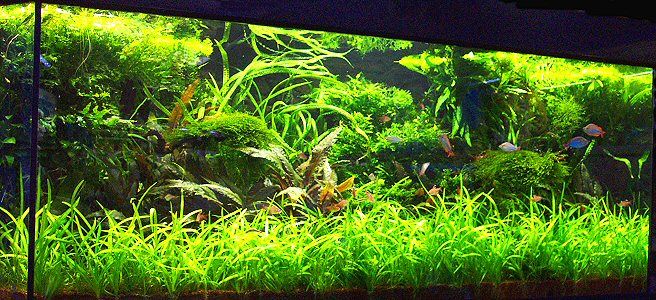
Are you looking for a new plant that would make a great carpet for the aquarium? In that case, you have to check out Dwarf Sagittaria, which is another plant that adds so much green color to the aquarium. Quite conveniently, though, this low-light aquarium plant can show different growth patterns depending on where you place it. For instance, placing it in the bottom layer ensures that the plant does not grow too tall. Even if it grows too old, simple mowing sessions will remove the problem. However, as said, there is a way to remove even that minimal amount of interference. Rest assured, Sagittaria subulata can look so enticing when you combine it with the correct aquarium carpet.
#7 Anubias Nana
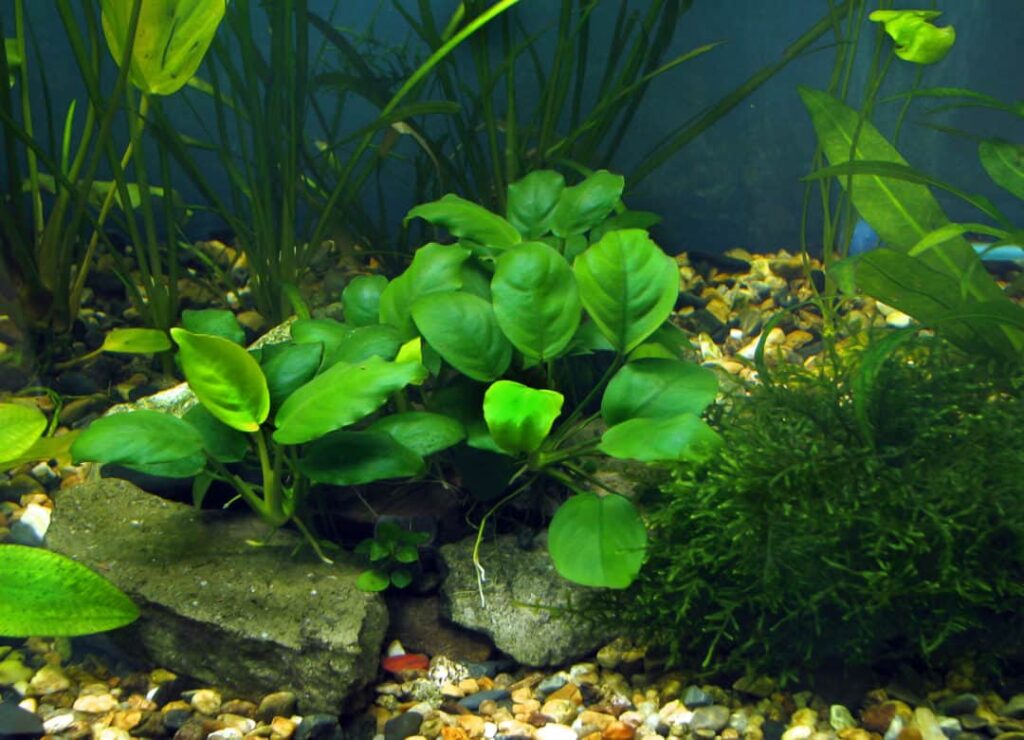
As you can guess from the name, there are similarities between Anubias nana and Anubias barteri, which we had covered in the first position. The similarities also continue when it comes to maintenance. You do not have to be an aquarium expert in caring for Anubias nana. Instead, simply planting it would be enough. Since the plant can adjust its growth according to the temperature and light, you can expect it to become a fully-fledged plant in no time. It is also a root-feeding plant, and you can improve its growth by adding some fertilizer to the ground. However, it would not be necessary if your fish tank consists of organic matter and other waste from fish. It is also easy to find in an aquarium market compared to others.
#8 Hornwort
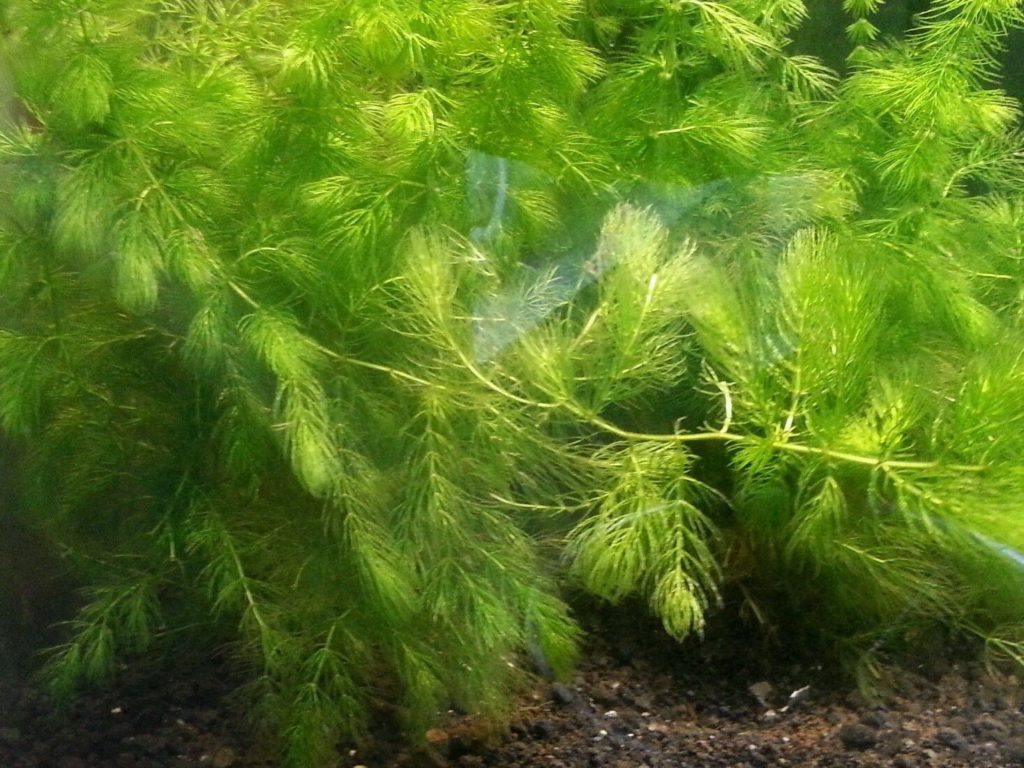
Hornwort is a fancy-looking low-light aquarium plant that you can choose without a doubt. We recommend this plant for those with a large aquarium since the plant can reach as high as 10 feet. If you have a tiny tank, you will have to spend a considerable amount of time trimming it. Even though Hornwort plants look stunning and unique, they do not work well with other plants. It is reported that Hornwort plants release a few chemicals that stunt the growth of other plants in the aquarium. Therefore, you may have to double-check the plants you plan to mix with the Ceratophyllum demersum. Otherwise, you may have a fish tank filled with dead plants.
#9 Rotala Indica

Have you seen an aquarium plant with needle-like leaves, and it becomes pretty thick for landscaping? Well, it was most probably Rotala indica, and it happens to be a favorite pick when it comes to low-light aquarium plants in the market. Unlike other plants on this list, however, Rotala indica is not about uniform designs. It can have different colored leaves at the top and the bottom, and the growth is superb when you can ensure a temperature between 72F and 80F. You should keep in mind that Rotala indica is not a uniquely strong plant. Therefore, you should be careful while trying to cut down the leaves or trim the top portion to keep it on the lower part of the tank.
#10 Pelia moss
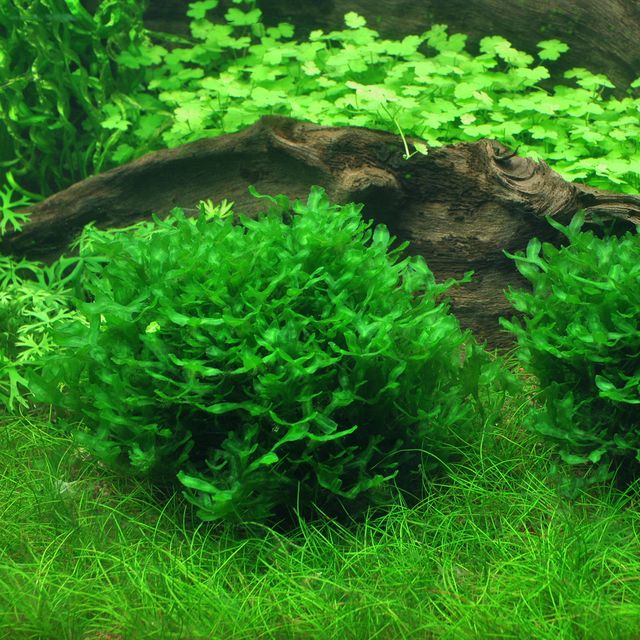
We wanted to conclude this list of the best low-light aquarium plants with Pelia moss, another famous name in the market. Monosolenium tenerum may seem similar to many other plants from the moss category in terms of design. However, we believe the plant has something unique to offer. It is not a root-feeding plant, though. Instead, the column-feeding system will ensure the best growth rates and consumption of the essential nutrients. As a result, Pelia moss is a great way to build a carpet bed for your aquarium despite its compact design. Experts recommend that you should introduce Pelia moss slowly to the aquarium. So, you may have to wait a few days after the transplantation process.
Others
Some other plants didn’t make our top ten, but they are still worth mentioning.
- African water fern: It’s ideal for large tanks since it is quite big when it’s fully grown, but under low lighting conditions, its growth will be slow. It’s easy to take care of, but you should be careful not to place it in the same tank with goldfish or cichlids.
- Amazon sword plant: It’s easy to feed as placing some root tabs in the substrate will be enough for it to propagate, but it might grow too big, and if you have a small tank or if you don’t want to have a crowded aquascape, we advise you to stay away from this one.
- Bacopa caroliniana: Bacopas are an essential part of almost any aquarium, and with constant care, they will beautify your tank to a great extent thanks to their uniquely colored leaves.
- Brazilian pennywort: It’s one of the favorite floating plants of aquarists because its green and round leaves look lovely around the surface of the tank. It’s ideal for warm water temperatures, but it may adjust to lower temperatures as well.
- Guppy grass: Also known as Najas guadalupensis, it’s another freshwater plant that can grow to its full length with little or no care, and it’s a fast-grower too, so you won’t need to use any liquid fertilizer for them! It may also easily adapt to different light conditions, but beware that it will have a shade of dark green under low light.
- Java moss: It’s an easy plant for your freshwater aquarium, and you can use it to either furnish your tank in sections or coat the base in green.
- Moneywort: It’s another low-maintenance plant as it’s directly fed by the nutrients in the water. Just by that, it will be able to reach its full growth, but if you don’t want your tank to be crowded by moneywort, you might opt for regular pruning.
- Sunset hygro: It’s also a fast grower, and thanks to the purple and red shades of its top leaves, it will look like it’s flowering. It’s a stem plant but when it’s full-grown, its leaves will be floating freely on the surface as well.
- Red ludwigia: This list is full of green leaves, but the broad leaves of red ludwigia, also known as ludwigia repens, will provide you with a different color if that’s what you’re looking for. Unsurprisingly, that color happens to be… red.
- Marimo moss balls: Okay, these are more algae than plant, but who doesn’t want fluffy balls sitting at the base of their aquarium? They will absorb the nitrate from the water and release oxygen, and they can withstand any sort of light and water temperature. Moreover, they are a sweetheart for many fish and invertebrates since they provide space for rest and sleep.
- Vallisneria: They are not as easy on the eye as the others on our list, but in good aquascaping hands, they will add a lot to your imagined landscape.
- Duckweed: It might be even less appealing than vallisneria, but it has its advantages: it’s very easy to care for and it makes a good hiding and resting spot for fish.
Conclusion
Low-light aquarium plants are not just the green-colored things you have seen so far. Instead, they can come in various colors and need different resources. More importantly, you can choose one based on the type of aquarium you currently have. And you would not have trouble trimming most of them if they grow too tall or broad.

Ian Sterling, founder of Fishlab.com, began his aquarium journey over 30 years ago, driven by a deep fascination for fish and their diverse personalities. His website, Fishlab.com, is dedicated to making fishkeeping accessible and enjoyable, offering beginner-friendly guidance, expert insights, and a community for aquarists to connect and share experiences.


